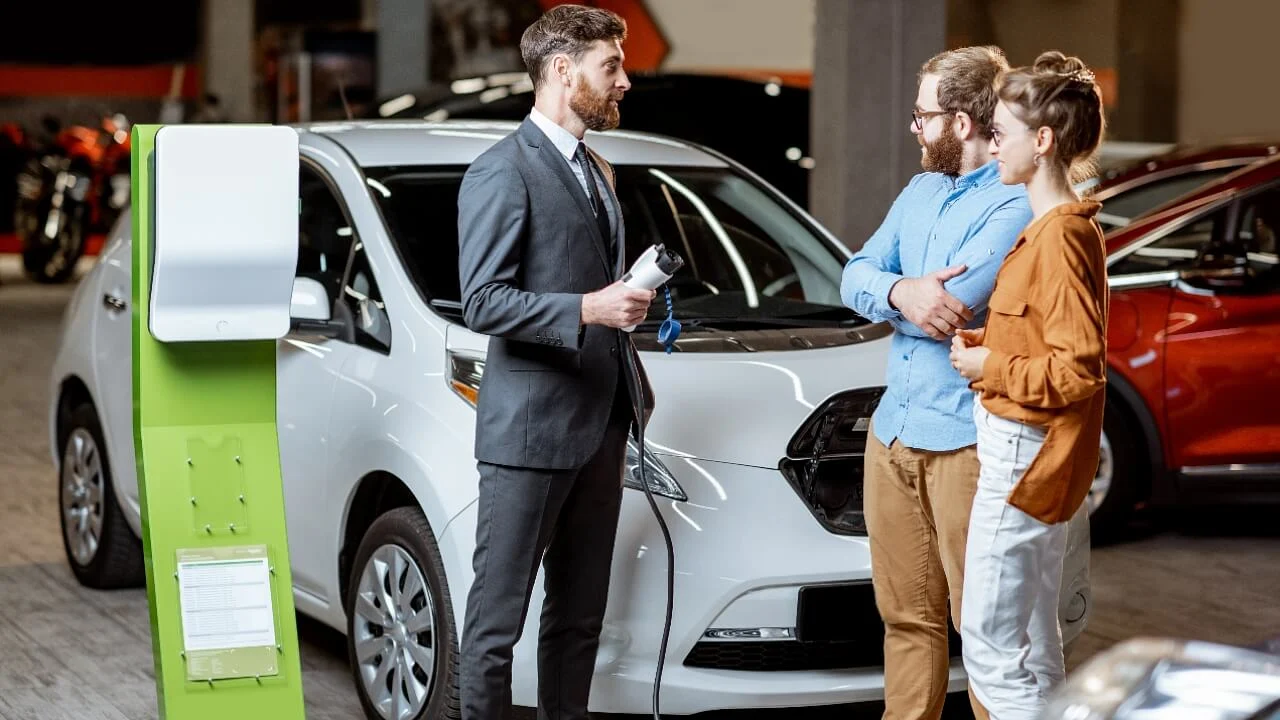24 Biggest Dos and Don’ts When Buying a Car

You get a unique pleasure from buying a car, whether it’s your first or an upgrade. This pleasure can be enhanced or blighted by the demands and outcomes of the numerous decisions you must make to complete the process of buying and bringing your car home.
More importantly, said decisions can have a lasting impact on your finances and overall peace of mind for years to come. Like most things in life, buying a car necessitates some dos and don’ts, depending on what you hope the experience will be like.
Of course, there are numerous hidden pitfalls we seem to discover every morning, and so are the lesser-known tips and tricks that can do wonders for you. This is your guide to the biggest car shopping dos and don’ts you must know, even if you miss the hidden pitfalls and obscure tips.
Do Your Research

Don’t just rely on your friends’ opinions. Find out for yourself why what is said was said and if all of that factors in your personal needs. Read reviews and scroll down to the comment sections to start a conversation. Investigate different makes and models and compare their features.
Even though our job usually entails doing the legwork so it’s easier for our readers to make informed decisions, personal research matters. Measure our guides against your lifestyle, daily requirements, and the features you need.
Don’t Ignore Online Reviews

Your “personal research” journey should lead you to as many independent customer reviews as you can find, many of which are online.
While it is true many of those are biased, nonsensical, and even plain stupid talk from faceless, disgruntled web browsers who may have never bought a car in their lives, many experienced owners and users are usually part of these online communities.
You can learn a great deal from what they have to say. Check out meaningful customer reviews about both the car and the dealership.
Do Set a Budget From the Very Beginning

The basic idea for a budget is to set financial boundaries by defining how much you can and are willing to spend. However, that’s just the basics. Don’t wait until you’ve decided on a car before setting a budget. So much can go wrong with your choices and finances if you do not have a pre-set budget before even combing through the internet and dealerships.
A pre-set budget makes your life easier by narrowing down your options. It saves you time otherwise spent looking at cars you won’t buy anyway. A budget saves you from buyer’s remorse and from making impulsive decisions. Include additional costs like registration, insurance, and taxes in your budget.
Don’t Rush the Decision

Many two cents have been given about rushed decisions: “Haste makes waste,” “Measure twice, cut once,” “slow and steady wins the race,” “act in haste, repent at leisure,” and — our favorite — “Good things come to those who wait.”
Unless you don’t care as much as we do, buying a car requires taking your time. It’s a critical ingredient to making an informed choice. Take your time to research, test drive, and compare trim levels.
People who rush into deals often rush out of them because they don’t take the time to factor in their lifestyle, family size, plans, and long-term needs in their purchase decisions. Patience will help you get better deals because you negotiate better when you’re not in haste.
Do Consider Total Cost of Ownership

We already talked about setting budgets but this one is important enough to warrant a separate entry. You’d be surprised to learn many shoppers focus on the MSRP and sticker price without factoring in the TCO (True Cost of Ownership). This mistake is often the reason for regrets or what we call “buyer’s remorse.”
So many extra-cost factors, including insurance premiums, fuel efficiency, depreciation, and maintenance needs, vary from make to make and even between models within the same make.
For example, the 4MATIC version of the new Mercedes-Benz CLA250 gets 23 mpg in the city and 33 mpg on the highway, while the standard model returns 25/35 city/highway mpg. In short, the TCO pricing system considers extra costs that go beyond the upfront cost of the car.
Don’t Skip the Test Drive

This, too, is too important to not get a separate entry in this list, even though we already discussed the importance of not rushing your decisions. As much as you can help it, don’t neglect to take the car for a test drive before sealing the deal. It should make little difference whether you are buying new or used.
You do not test-drive a car only to figure out what might be broken but also to get a feel of the performance, handling characteristics, noise insulation, real-world mpg, steering, responsiveness, and overall suitability to your personality. We realize some situations do not allow a test drive, but you should never buy without testing if you can.
Do Test Drive Multiple Cars

About that test drive we discussed above, well, you can’t really know what you’re missing until you experience another. You don’t necessarily do this to identify which car has the worst road manners. It’s more like figuring out what fits your personality, temperaments, and driving needs the most.
Each car brings a unique feel to the table, so it’s important to assess how the acceleration, seating comfort, braking, steering feedback, interior feel, and outward visibility agree with your motoring spirit. It goes without saying the more cars you take for spin, the more informed you are.
Don’t Agree to Add-Ons You Don’t Need

That’s what they call “upselling,” a well-known technique dealers employ to get you to buy an advanced trim or premium features of a car you’re trying to purchase. We’ll just come out and say it even if no one else does. You do not need a G-force meter or a change-up indicator, extended warranties, or social media messaging functions on your car unless they come in the package, that is, at no extra cost.
What’s the point of the CVT paddle shifter, anyway? Isn’t the thing counterintuitive, considering CVTs don’t have traditional gears? But you can bet someone at the dealership has many glowing reasons why you should pay an extra $1,000 to get something that gives you nothing more than an illusion of manual control. Don’t fall for useless add-ons, whether in the form of upselling or cross-selling.
Do Check Reliability Ratings

Many people these days openly express a lack of confidence in web-based consumer intelligence agencies like JD Power and Consumer Reports.
The critics question their methodologies and focus areas, often arguing that JD Power, for instance, judges a car’s fitness based on “surface” categories that do not dive deeply into technical aspects like engine performance and maintenance requirements/costs.
We do not argue this at all, but we still highly recommend looking at long-term reliability ratings from sources like CR or JDP. Here’s why: JDP collects data from real vehicle owners over the first three years of ownership. This means their ratings smell of real drivers’ experiences, said drivers’ interactions with dealerships, and actual resale value.
Don’t Sign Blank Documents

Know this and know peace: All paperwork must be complete before you sign anything. If you’ve suffered from or tend to suffer the consequences of this sort of neglect, we encourage you to read up on what the Consumer Financial Protection Bureau has to say on the matter.
“Once you’ve finished negotiating with your lender or dealer,” says the Bureau, “make sure to review all aspects of your loan agreement before you sign your paperwork and drive off the lot.”
The risk with signing the dotted line on a blank or partially filled form is the room for manipulations and unexpected terms. We read the story of a family that purchased a new car only to be called by the dealership the next day to return it and take a less-loaded model. The customer won the case because every paper had been signed.
Do Inspect Safety Features

Safety is a paramount criterion for the top contenders in the world of automobiles. When shopping, do not elevate reliability and performance above safety and security. There’s a reason automakers herald their accolades each time they win the recognition of industry watchdogs such as North America’s IIHS (Insurance Institute for Highway Safety) and Europe’s NCAP (European New Car Assessment Program).
Recently, Volkswagen announced to the press that the new Passat is “one of the best-rated mid-sized models” because it was awarded the NCAP’s five-star top rating. Similarly, Honda heralded the Pilot’s 2024 TOP SAFETY PICK+ (TSP+) rating by the IIHS. At the very least, ensure the car you’re buying has essential safety features like airbags, ABS, and electronic stability control.
Don’t Assume the Sticker Price Is Final

There’s always room for negotiation, especially when your target is a used car. After all, adding fees beyond the MSRP, such as documentation fees (up to $500), destination charges (up to $1,000), and mandatory government fees (e.g., title work or registration changes), is an invitation to negotiate.
We do not encourage low-balling, but negotiation has always been a crucial part of the deal. It exists because there is such a thing as “asking price.” Sometimes, the sticker price stays up even though prices have dropped due to manufacturer or dealer incentives.
Do Consider Financing Options

It never hurts to shop around for the best financing deals, including bank loans and dealership offers. This is where patience, reading up on online reviews, and pre-setting a budget come in handy.
Although financing seemingly makes it easier for you to drive off the dealership lot in a more expensive car you wouldn’t have otherwise afforded to pay for upfront, it may not be a smart decision in the long run. Notwithstanding, financing has its benefits because it lets you spread the cost of the car over time.
Also, timely payments can be good for your credit history. It’s important to shop around for the best deals, though. The impact of the interest rate on your monthly payment plan can make or ruin your car ownership experience.
Don’t Focus Only on the Exterior

Here’s a secret to differentiating a gearhead from a regular car person. Gearheads are more interested in the driving experience than how they look in the car and how much attention they get. It’s the other way around for the average car person.
Whether or not you’re a gearhead who won’t hesitate to take a pass on a beautiful car with little to no character, it’s important to pay equal attention to the interior quality and usability of the car you intend to buy.
Every car owner is impacted by headroom, legroom, noise insulation, adjustable seating, trunk volume, storage cubbies, forward/rearward visibility, upholstery quality, and other cabin-related features.
Do Read the Fine Print

Just as important as refusing to sign blank or partially filled documents is the need to carefully review all contracts and agreements before signing that dotted line.
Don’t be like Kevin, who signed away his “Alibi” bar to a Russian con artist in season 6 of Shameless TV series. For not reading the fine print, Kevin Ball had to do all sorts of things to put food on his family’s table, including dancing at a gay bar.
The “fine print” would’ve revealed additional fees, such as extended warranties, dealer add-ons, or service charges that eventually swell or impact the overall cost of the car. Within the lines of the “fine print” hides return policies, warranty coverage, and other nitty-gritty capable of surprising you later.
Don’t Ignore Fuel Type

We won’t be one bit surprised if a study reveals an alarmingly low percentage of car shoppers and owners don’t care as much about fuel type when deciding on a car to buy. Consumer reports and studies on car buying behavior often cite factors like price, model, brand, and features as precedence over mundane topics like “fuel type.”
Don’t stop at comparing the mileage readings and EPA-estimated fuel economy. It’s equally important to consider whether a gasoline, diesel, hybrid, or electric vehicle will meet your needs better.
Do Understand Your Needs

If the type of car you wish to buy is immediately obvious to you, chances are you don’t really know what you need besides what you want. You might want a sports car, but what you actually need is a sports sedan. You might want a hatchback but need a subcompact crossover. A minivan might be a better fit for your transportation and storage needs than a full-size SUV.
It’s easy to make a wrong choice if you fail to understand and examine your needs objectively. Discerning shoppers prioritize a car that fits their lifestyle and daily commuting needs over a second or third car to meet their hobby and adventurous desires.
Don’t Assume Bigger Is Better

Choose the right size for your needs, but do you know the right size? Innovations in automotive design have proven multiple times that big things can come in small packages. Be mindful of that.
Let’s say a hatchback, for example, suits your needs perfectly, but you’re worried about interior space. You don’t have to settle for the Kia Forte 4-door sedan when the Honda Fit (known as the Honda Jazz in some markets) can prove “big” isn’t always better with its “Magic Seat” system with multiple configurations to maximize cargo space.
It’s a similar story with the MINI Cooper. Despite its diminutive size, the MINI employs clever interior packaging and design elements that make the most of its available space. Besides accommodations, “big” might mean poorer fuel economy, challenging maneuverability, etc.
Do Check for Incentives and Rebates

You might miss out on huge savings by neglecting to check for manufacturer incentives, dealer rebates, and other promotions to stimulate sales. Rebates, for instance, are typically direct discounts off the car’s price for select members of society, such as military veterans and recent college grads.
It also includes loyalty and conquest bonuses, the latter of which applies to shoppers switching from a competing brand. We say explore all your options before committing to a deal, even if the savings come in the form of low-interest rates for financed vehicles.
Don’t Skip the Dealership Visit

Only in extremely tight situations where you cannot visit the dealership in person should you even consider buying a car without seeing and test-driving it. We know online research is great, but we insist seeing it in person is crucial.
Remember, the photos uploaded on their website are what they wish or can show you. There’s a good chance there’s something better for you on the ground, but the photos aren’t up on the web. Not only do they have a wide range of cars on their lots that may be too many to be uploaded online at once, but they also often have access to additional inventory from partner dealerships. You wouldn’t meet these cars if you simply browsed and paid online.
Do Get a Vehicle History Report

If you think obtaining a history report for a car you wish to buy is a problem exclusive to the used market, think again. Are you sure there’s no prior damage or issues with the shiny new car you wish to buy? No in-transit accidents? No handling mishaps? This is especially applicable to demo or display units in new cars.
Some dealerships offer complementary partial history reports, but you still need the full report to learn as much as possible about the car. The report provides vital information about the car, including accident history, sales history, previous owners, open recalls, title status, service records, and mileage verification.
Don’t Overlook Your Credit Score

Don’t get carried away by offers telling you your credit score doesn’t matter. It affects the interest rate on your auto loan, and lenders use them to determine your creditworthiness. If you do get approval for a loan, a poor credit score could leave you with less favorable terms, such as a shorter repayment window or higher monthly installments.
In short, your credit score affects your financing options and interest rates. Insurers use it to determine your premium, and a healthy score gives you more leverage when negotiating terms and even the price of the car.
Do Review the Warranty

Many people who took dealer-offered extended warranties wouldn’t have done so if they reviewed and understood the fine print of their manufacturer warranty, what it covers, and how long it covers.
Warranties protect the customer from unexpected repairs, but the features of extended warranties often overlap with manufacturers’, essentially making them a waste of time and money. Review and compare warranties when car shopping because different automakers offer varying coverage. For example, there’s what’s known in the industry as a bumper-to-bumper warranty, and then there’s a powertrain, factory, and corrosion warranty.
Don’t Underestimate the Importance of Comfort

You may put personal comfort at the bottom of your list, but don’t forget to tick it off when buying a car. We can imagine how often it’s proven to be a mistake to dismiss personal comfort and convenience features as nonessential.
If, for example, you dismiss power liftgates as unnecessary convenience features, you might feel differently when you approach the trunk with your hands full and the floor is wet because it’s been raining. Make it a priority to ensure the car you wish to buy is comfy enough for the money, not just for you but also for your passengers.





